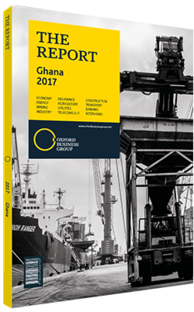Limited lending to small businesses still an issue for Ghana's banking sector
Lending to small and medium-sized enterprises (SMEs) in Ghana has slowed in late 2016. In light of rising non-performing loans (NPLs) in 2015, banks have slimmed down their lending books significantly. With interest rates for blue-chip borrowers in established sectors of the economy surpassing 30%, rates for SMEs can often go far higher. This is not unusual for emerging and frontier markets; low levels of SME lending can be found across the continent. This is in part a reflection of higher levels of risk in a segment of the economy where bookkeeping is not always up to date and credit histories are non-existent. In the case of Ghana, it is exacerbated by heavy borrowing by the government in local markets, which soaks up bank activity and drives up interest rates.
Sector Challenges
John Defor, senior policy officer at the Association of Ghana Industries, a private sector industry group, told OBG, “It’s an albatross in that in one breath we are being encouraged to source financial support, but in another breath the managers of the economy have crowded the marketplace through increased borrowing.”
Another challenge faced by SMEs in the past is that the banking sector has not invested resources into understanding that segment. “SMEs are short-term borrowers. They mostly borrow to transact or to trade,” Robert Yakohene, head of research and business development at UT Bank, told OBG, “Unfortunately, the banks sought to apply the same approach that they used to manage their corporates to manage the SMEs, and that wasn’t going to work.”
Having designed their lending policies around the model of larger firms, banks have not been as responsive to the needs of emerging SMEs, which are structured very differently. To remedy this shortfall in provision, smaller banks and non-bank financial institutions have begun to fill the void.
Government Support
To support SMEs and other parts of the private sector, the government is in the midst of its second Private Sector Development Strategy (PSDS II). Originally planned for the years 2010-15, the PSDS II was extended until 2017 to align with the government’s Medium-Term National Development Policy Framework (2014-17). The PSDS II seeks to tackle many of the challenges facing SMEs, including access to capital. However, the strategy lack detail on how the government will go about accomplishing these goals, and in light of efforts to close the deficit, funding for new initiatives is constrained.
Export-oriented SMEs received a boost in 2016 with the announcement of a planned export-import bank. Once in operation, this quasi-government institution will help facilitate financing and insurance for exporting companies. Joe Tackie, CEO of the PSDS II programme at the Ministry of Trade and Industry, told OBG, “Value addition and export diversification needs to be led by the private sector, but the public sector must reduce the cost of doing business to engender increased levels of investment, so that we can create more capital formation in the country.”
Alternative Financing
There are initiatives outside of the banking sector as well, such as the Ghana Alternative Market (GAX). A secondary board on the Ghana Stock Exchange, the GAX aims to encourage SMEs to issue public debt and equity. In its first year of being fully operational, the GAX attracted two issues each in the equity and fixed-income markets. Although issuing shares or debt in public markets requires more transparency and involves a bigger regulatory burden than traditional bank financing, the resulting cost of funds could be substantially lower. Additionally, firms are able to issue debt with a longer maturity than is typically allowed from banks. “There is a restrictive effect on what can be done if the circulation of money is poor, which will ultimately affect lending. Banks cannot lend what they do not take in with respect to deposits,” Robert Kow Bentil, managing director of The Royal Bank, told OBG.
You have reached the limit of premium articles you can view for free.
Choose from the options below to purchase print or digital editions of our Reports. You can also purchase a website subscription giving you unlimited access to all of our Reports online for 12 months.
If you have already purchased this Report or have a website subscription, please login to continue.

